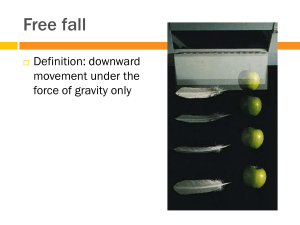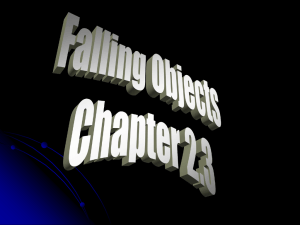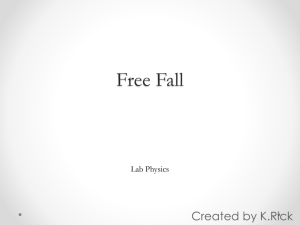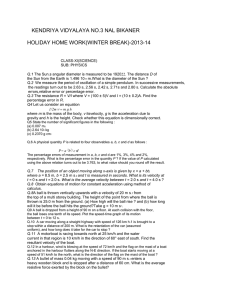Free Fall and the Acceleration of Gravity Worksheet
advertisement
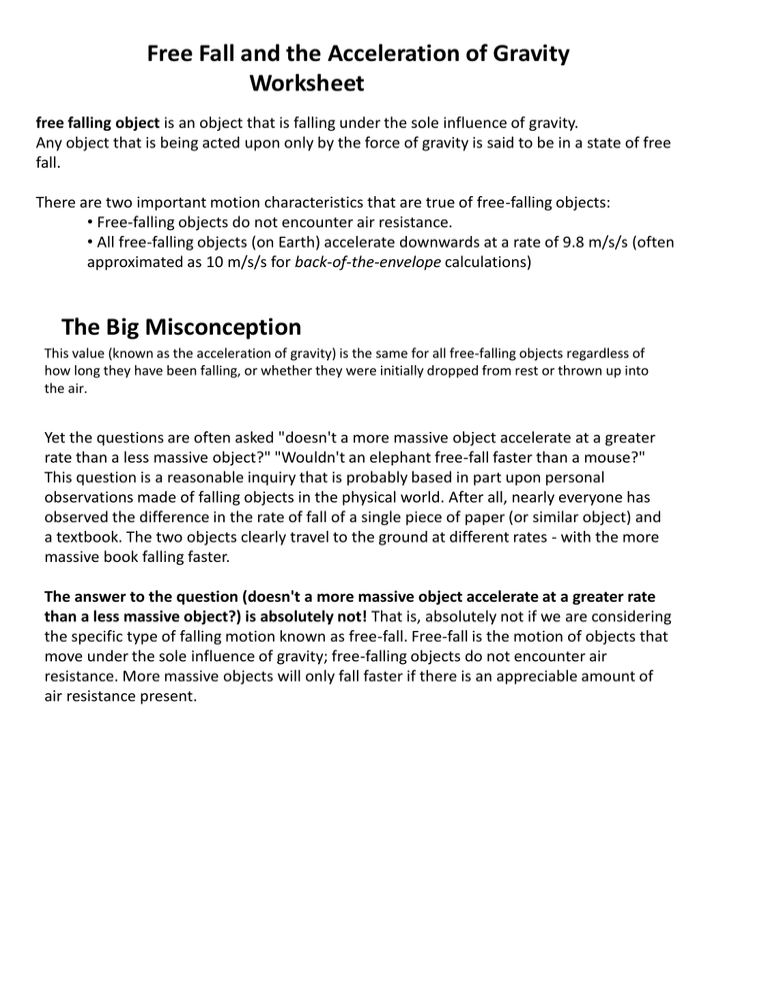
Free Fall and the Acceleration of Gravity Worksheet free falling object is an object that is falling under the sole influence of gravity. Any object that is being acted upon only by the force of gravity is said to be in a state of free fall. There are two important motion characteristics that are true of free-falling objects: • Free-falling objects do not encounter air resistance. • All free-falling objects (on Earth) accelerate downwards at a rate of 9.8 m/s/s (often approximated as 10 m/s/s for back-of-the-envelope calculations) The Big Misconception This value (known as the acceleration of gravity) is the same for all free-falling objects regardless of how long they have been falling, or whether they were initially dropped from rest or thrown up into the air. Yet the questions are often asked "doesn't a more massive object accelerate at a greater rate than a less massive object?" "Wouldn't an elephant free-fall faster than a mouse?" This question is a reasonable inquiry that is probably based in part upon personal observations made of falling objects in the physical world. After all, nearly everyone has observed the difference in the rate of fall of a single piece of paper (or similar object) and a textbook. The two objects clearly travel to the ground at different rates - with the more massive book falling faster. The answer to the question (doesn't a more massive object accelerate at a greater rate than a less massive object?) is absolutely not! That is, absolutely not if we are considering the specific type of falling motion known as free-fall. Free-fall is the motion of objects that move under the sole influence of gravity; free-falling objects do not encounter air resistance. More massive objects will only fall faster if there is an appreciable amount of air resistance present. 1. Write your two equations here for constant acceleration: 2. A ball is dropped from a building from rest that is 250m tall. Draw the diagram of the ball and its motion off the building. Be sure to label your variables, displacement, direction of fall, initial velocity, final velocity, time and acceleration. 3. You toss a ball that travels 3.5 above your head and then it falls back down. Draw the diagram of the ball and its motion off the building. Be sure to label your variables, displacement, direction of fall, initial velocity, final velocity, time and acceleration. 4. A ball is dropped from a building from rest, how tall is the building, if it takes the ball 2.5s to reach the ground? Be sure to draw to your motion below and write down all givens. 5. You fall off your bunk bed that is 2.7m above the ground. How long it take before you hit your head on the floor and screamed? 6. An airplane accelerates down a runway at 3.20 m/s2 for 32.8 s until is finally lifts off the ground. Determine the distance traveled before takeoff 7. A ball is throw up in the air with initial velocity of 2.5 m/s , how long does it take the ball to reach maximum height (velocity = zero) 8. Upton Chuck is riding the Giant Drop at Great America. If Upton free falls for 2.6 seconds, what will be his final velocity and how far will he fall? 9. A stone is dropped into a deep well and is heard to hit the water 3.41 s after being dropped. Determine the depth of the well.


